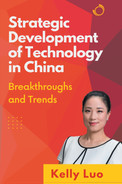The Latest Developments in Commercial Quantum Computers
D-Wave Systems produces the world’s first commercial quantum computer. At the end of October 2020, D-Wave launched the latest 5,000-qubit quantum computing platform called Advantage, which can handle up to one million variables. Customers can access the system through the company’s Leap 2 quantum cloud service. Since its official launch in early 2021, it has attracted many corporate customers, including automaker Volkswagen.
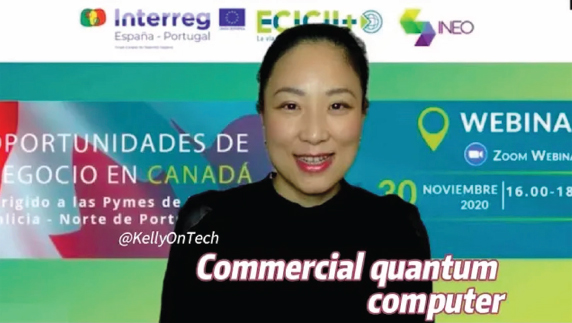
Commercial quantum computer
What Did Volkswagen Do With Quantum Computers?
Volkswagen is the first car manufacturer to use quantum computers to calculate traffic flow. Do you know where the data that were used to train the model came from?
Volkswagen used the movement data collected by 418 taxis in Beijing, one of the busiest cities in the world, and the team is trying to optimize the traffic flow between the city center and the airport. After a successful proof of concept, Volkswagen has developed the first quantum application of its kind. This is a mobile application that predicts the best route to any given destination. The application was used to arrange bus routes at the 2019 Web Summit in Lisbon.
This is a comparison chart of traffic conditions before and after using the program.
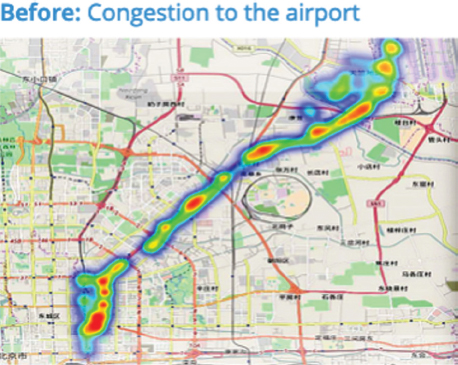
Before: congestion to the airport
Source: Volkswagen.
* Red for heavy traffic jams, yellow for traffic jams, green for smooth traffic

After: congestion to the airport
Source: Volkswagen.
* Red for heavy traffic jams, yellow for traffic jams, green for smooth traffic
Volkswagen is currently using commercial quantum computers for projects including optimizing assembly lines in car factories and solving packaging and distribution logistics problems. On the factory floor, the continuous data stream generated under constantly changing conditions in the production process must be optimized to make the target change in real time, minimize delay and waiting time, and listen to and respond to sporadic and irregular requests and responses.
In order to find the ideal solution, Volkswagen is developing a hybrid algorithm that relies on classical and quantum methods to solve the problem. Similar hybrid methods have been assigned to machine learning problems. Using non-negative/binary matrix factorization, software engineers designed a recommendation system that can understand customers’ biases, preferences, and behaviors, and then help them choose and customize the ideal vehicle.
With the continuous development of quantum application expertise, Volkswagen’s team is now exploring financial market forecasting, cyber security threat detection, vehicle price forecasting and weight minimization, and the continued development of autonomous vehicles.
By the way, D-Wave has opened its quantum computing cloud platform for free to institutions researching the new coronavirus around the world, providing unlimited use. If you have research needs, you can contact them directly.
What Is the Pricing Model of Commercial Quantum Cloud Computing?
When D-Wave launched the first version of Leap, the company’s pricing started at $2,000 per month per QPU hour (quantum processor unit (QPU) time). Leap 2 is more flexible because users can upgrade their accounts to add extra time in customizable blocks of Leap units for different skills and investment levels. These units can be used for QPU and hybrid solver services.
At present, D-Wave’s commercial quantum computing cloud service adopts a monthly payment model, which has three tiers:
1. Tier 1: 335 U.S. dollars per month + tax, D-Wave QPUs can be used for 10 minutes at most, and the hybrid solver can be used for up to 200 minutes.
2. Tier 2: 1,000 U.S. dollars per month + tax, D-Wave QPUs can be used for 30 minutes at most, and the hybrid solver can be used for up to 600 minutes.
3. Tier 3: 3,000 U.S. dollars per month + tax, D-Wave QPUs can be used for 90 minutes at most, and the hybrid solver can be used for up to 1,800 minutes.
What Does It Mean to Use D-Wave’s QPUs for One Minute?
When you register for Leap 2, you will get one minute of free direct quantum computing access time, which is equivalent to running 400 to 4,000 questions, depending on the difficulty of the question. Leap 2 also includes 20 minutes of free access to the Quantum Classical Hybrid Solver.
Video version (www.youtube.com/watch?v=ux_-gkXKMas)
What Is the Most Powerful Quantum Computer in the World?
The world’s most powerful quantum computer is launched by the star start-up IonQ.
IonQ was founded in 2015. The founders include a pioneer in quantum computing: Christopher Monroe, who led the team to show the first successful quantum logic gate in 1995.
Dr. Monroe and Dr. Jungsang Kim received 2 million U.S. dollars in seed funding from New Enterprise Associates. The two founders spent more than two decades studying quantum physics together before they founded the company. They believed that tiny atomic particles called ions could be used to build programmable quantum computers.
Why Call IonQ a Star Start-Up?
Let’s take a look at this start-up’s luxurious investor lineup: between 2015 and 2018, IonQ acquired venture capital from Google Ventures, Amazon Web Services, and NEA raised an additional 20 million U.S. dollars. The two founders persuaded Peter Chapman to join the company as the Chief Executive Officer (CEO) and President.
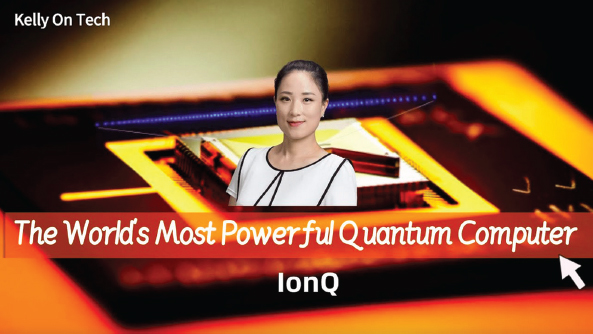
The world’s most powerful quantum computer—IonQ
Peter Chapman is the son of an astronaut. He started programming at MIT’s (Massachusetts Institute of Technology) famous artificial intelligence laboratory when he was 16 years old. Then he founded Level Systems, which made video games based on films such as Star Trek and Indiana Jones.
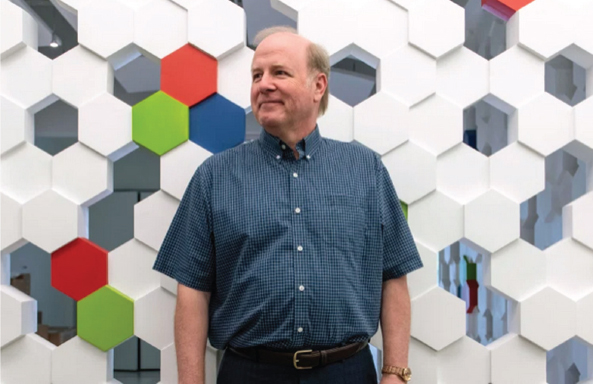
Peter Chapman, CEO of IonQ
Source: IonQ.
In the late 1980s, Peter achieved financial freedom and chose to retire. He returned to the arena in 2007 and was responsible for developing a handheld electronic reading device for blind people called K-NFB Reader. He joined Amazon in 2014 as the Director of Engineering for Amazon Prime.
K-NFB reader is a handheld electronic reading device specially developed for the blind. It was developed in collaboration with Ray Kurzweil and the National Federation of Blind.
IonQ, under the guidance of the new CEO and President Peter Chapman, raised another 55 million U.S. dollars in 2019 from prestigious investments, including Samsung, Lockheed Martin, Airbus, Bosch, Hewlett-Packard, and Mubadala Investment.
In early 2021, IonQ chose to go public through a merger with a SPAC1 (special-purpose acquisition company) dMY Technology Group III. The transaction created a consolidated entity with an estimated value of approximately 2 billion U.S. dollars.
Working Principle
IonQ uses perfect atomic qubits extracted from nature, suspends them in a vacuum and connects them with a laser, thereby fabricating or fine-tuning qubits without synthesis. IonQ has also successfully constructed and demonstrated a fully programmable universal gate set quantum computer architecture. Their method does not require breakthroughs in physics, materials science, or manufacturing, and can eliminate any environmental stress factors.
Can We Buy IonQ’s New Quantum Computer Now?
From October 2020, their new 32-qubit system was available first to be used by their direct partners in the energy, pharmaceutical, and manufacturing sectors through a private beta.
In early 2021, its cloud services were available on Amazon Cloud AWS Bracket and Microsoft Azure Quantum. In fact, as early as November 2019, IonQ reached a cooperation with Microsoft. Azure Quantum is a full-stack open cloud ecosystem that enables IonQ’s quantum computer to be based on captured ions, and users can purchase Microsoft’s cloud services so that users can use IonQ’s unique method for quantum computing. If you are a Microsoft Azure Quantum customer, you can use existing Microsoft tools (such as Q#, QDK, and Visual Studio) to run your own calculations on the world’s most accurate quantum computer. Through this partnership, IonQ can focus on quantum hardware and can take advantage of Microsoft’s continuous innovation in quantum software tools.
Prospects
The goal of the second phase of IonQ is to create a quantum computer with a performance that exceeds that of a supercomputer. Once quantum computers surpass supercomputers, the industry will enter the third and final stage, which is to set out to create quantum systems that will truly change the world—“think one million qubits at a start, and eventually many millions, quantum desktop computers, and more”—IonQ.
Quantum computers will eventually solve problems that cannot be solved by today’s classical computers. Within 10 years, large fault-tolerant quantum computers will also be able to accurately simulate large and complex molecules. This ability is likely to lead to the production of new drugs and new materials. These applications and many other applications will eventually create major quantum computing revenue opportunities.
Video version (www.youtube.com/watch?v=Fp66rYutV-c).
What Milestones Has China Achieved in the Field of Quantum Computing?
At the end of 2021, Chinese research teams made significant progress on two quantum computing routes at the same time, namely superconducting quantum and optical quantum. Among them, the superconducting quantum computing research team has built a prototype Zu Chongzhi II, which can solve a given problem 10 million times faster than the fastest supercomputers today. The optical quantum computing research team has built a prototype Jiuzhang II, which can solve a given problem a billion times faster than supercomputers.
These two achievements mean that China has become the only country in the world to achieve quantum hegemony on two technical routes, which is a considerable technological advantage. The so-called quantum hegemony is that quantum computers solve problems that classical computers cannot solve at all.
The Superconducting Quantum Computing Prototype “Zu Chongzhi II”
A research team consisting of Academicians Pan Jianwei, Zhu Xiaobo, and Peng Chengzhi from the Institute of Quantum Information and Quantum Science and Technology Innovation, Chinese Academy of Sciences, and Chinese University of Sciences has successfully developed a 62-bit programmable superconducting quantum computing prototype Zu Chongzhi II and realized a programmable two-dimensional quantum walk on this basis. The research results were published online in the international academic journal Science on May 7, 2021. This achievement was selected as one of the top 10 technological advances in China in 2021.
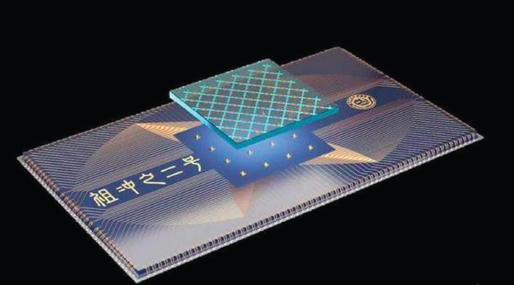
Superconducting quantum computing prototype Zu Chongzhi II
Source: Chinese Academy of Sciences.
The equivalent calculation is 10 million times faster than the current fastest traditional supercomputer, and it has achieved a fast solution to the quantum random circuit sampling task, and its computational complexity is higher than that of Google’s similar superconducting quantum computing prototype, which also marks China’s global leadership in the superconducting quantum computing system.
“Jiu-Zhang II” Quantum Computer
China has successfully developed Jiuzhang II. Jiu-Zhang II has three major breakthroughs. First, it significantly improves the yield, quality and collection efficiency of the quantum light source, raising the key indicator of the light source from 63 to 92 percent. Second, it increases the multiphoton quantum interference circuit from 100 to 144 dimensions, and the number of photons manipulated from 76 to 113. Third, new programmable features have been added.
Compared with the previous Jiuzhang I, Jiu-Zhang II is 10 billion times faster; the problem that Jiu-Zhang II can calculate in one millisecond takes 30 trillion years for the world’s fastest supercomputing.
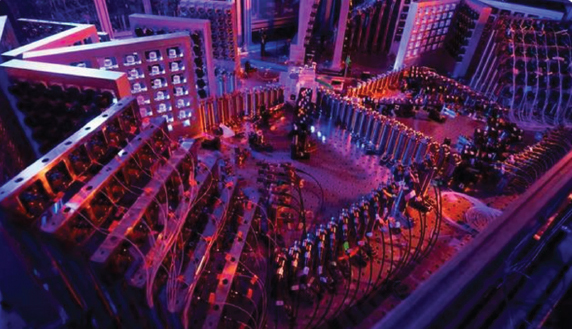
Jiu-Zhang II quantum computer
Source: Chinese Academy of Sciences.
Guo Guangcan, a member of the Chinese Academy of Sciences, also invented a quantum USB flash drive that can lock light for one hour (the previous world record was one minute), which will also greatly reduce the difficulty of manufacturing quantum computers in China.
China’s First Quantum Computing Global Developer Platform Officially Launched
On January 23, 2022, China’s first quantum computing global developer platform was officially launched. This is the first classical-quantum collaborative quantum computing development and application demonstration platform in China, jointly built by Hefei Big Data Company and Hefei Benyuan Quantum Computing Technology Co. Version 2.0, is a global developer platform for quantum computing that is more widely used, and was formerly the first quantum computing innovation and entrepreneurship platform in China. Quantum computing can provide core computing power beyond the limits of traditional computers in many key technology areas, such as new materials, biomedicine, financial analysis, and artificial intelligence.
The platform has four major quantum computing modules, namely development tools, online programming, industry applications, and educational science. The four modules are practical and can meet the different needs of different users. The development tools module is equipped with multiple development tools for quantum computing systematization, including quantum computing programming framework, quantum integrated development environment, and quantum computing compiler.
This platform offers both on the cloud and offline modes. Developers can access the platform on the cloud, and can conduct quantum computing learning, project development and innovative applications at any time. The Hefei Big Data Industry Demonstration Park provides physical venues and a dual entrepreneurship service platform offline, adopts the physical base + fund + data + customized service operation service model, builds a big data ecological chain, and provides innovative entrepreneurs in the field of quantum computing.
Why Should We Vigorously Develop Quantum Computing?
Pan Jianwei, whose team developed China’s Jiuzhang Quantum Computer, pointed out that the development of modern information technology is built on quantum technology. For example, quantum research in high-energy physics gave birth to the Internet.
One of the bottlenecks that information technology currently faces is greater computing power. Another serious challenge is information security. Quantum computing has the potential to solve these two major problems. Because quantum computing has a very strange feature, that is, quantum cannot be accurately replicated, and measuring quantum will affect itself, so it cannot be replicated through measurement, which is a prerequisite for the security of quantum encryption technology. In terms of computing power, a quantum computer only needs 0.01 seconds to calculate the equations that would take an ordinary computer 100 years to calculate.
In addition, quantum simulation can be used to research special drugs and improve energy efficiency; quantum optimization can be used to help solve traffic congestion and improve investment returns, and so on. The core of solving these problems lies in the fact that with quantum computers, we can count faster and handle larger amounts of data. These fields may become the first practical and commercial breakthroughs in quantum computing, bringing tangible changes to our lives.
How Can Quantum Computing Help Autonomous Driving?
First, with the exponential increase in computing power, true autonomous driving can be achieved. A vehicle’s cameras, radar, navigation, and other sensors generate up to 40 terabytes of data per hour, equivalent to the storage capacity of 500 smartphones, and processing this data alone requires enormous computing power. If coupled with the computing requirements of vehicle–road coordination, it puts forward extremely high requirements on computing power. In June 2021, Tesla released its own supercomputer to train the neural network for autonomous driving. On the autonomous driving track, in addition to fighting sensors and algorithms, computing power is also required.
In addition, the increase in computing power will bring the demand for extreme transmission speed. In the field of autonomous driving, to process massive data, in addition to computing power requirements, signal transmission must also keep up. The transmission capacity of 5G is 10 times that of 4G, the time delay is in milliseconds; in the future, the transmission capacity of 6G may be 100 times that of 5G, the time delay can be reduced to the microsecond level.
In areas not covered by 5G, satellites are required for autonomous driving signal transmission. Not only did Elon Musk launch Starlink satellites, but also China’s Geely Automobile is also planning to launch its own satellites. Regardless of whether you choose terrestrial communication or satellite communication, the millisecond race in autonomous driving has begun.
